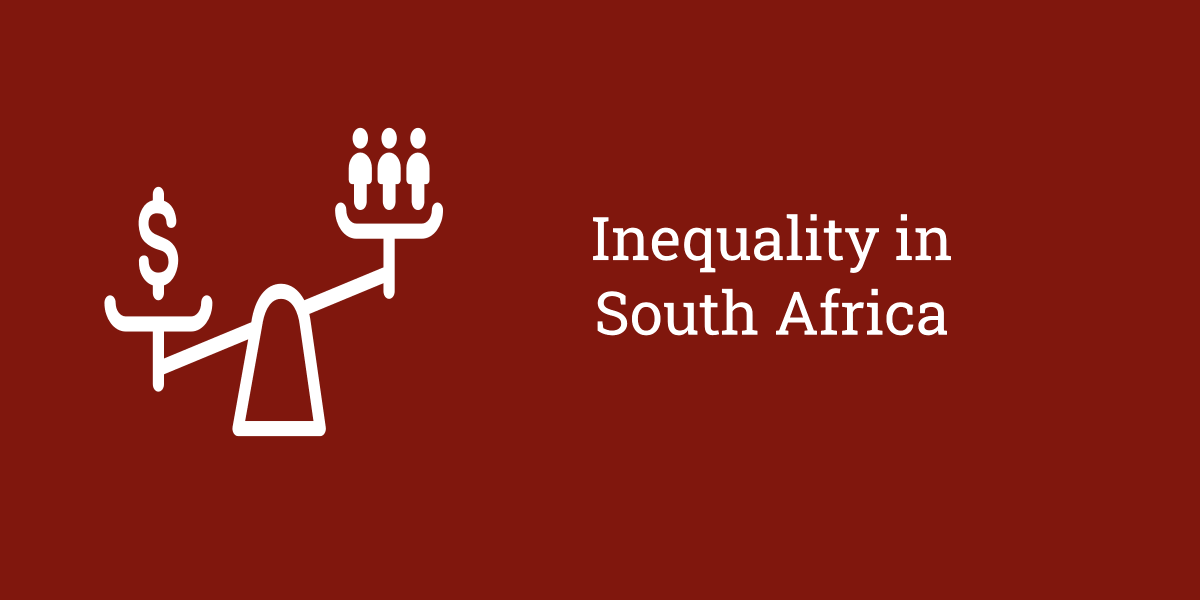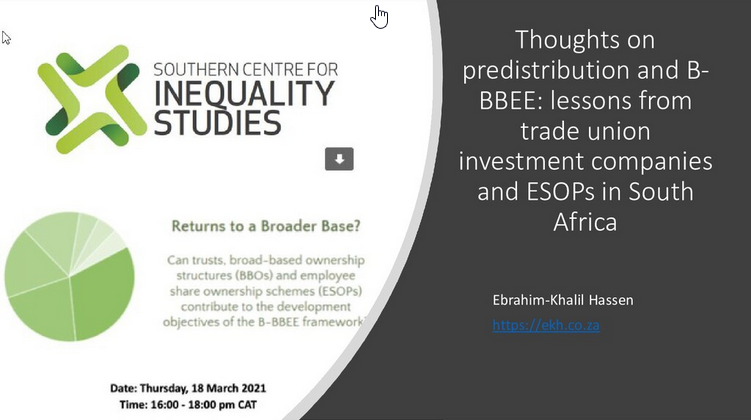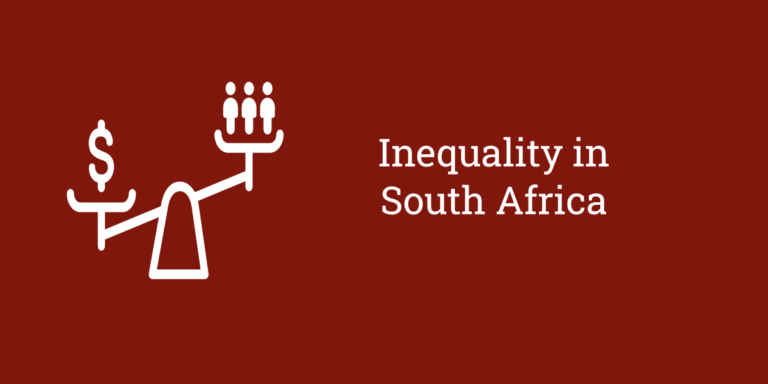Mzansi 2030: The clarion call within the ruling party congress is “Masupatsela.” The report from the secretariat is depressing. It tells us that once upon a time, an astute minister with a talented bunch of advisors and bureaucrats dreamed of a South Africa in which unemployment was 6%, no one lived in poverty and the poorest 40% were getting a greater share of total income. Unfortunately, we are not living happily ever after, in terms of its development indicators; South Africa in 2030 resembles South Africa in 2010. The system has replicated itself, where the top layers of income distribution remain unchanged and the country has not managed to reach its jobs and growth targets. This reality is more likely than we dare to admit.
Masupatsela! The literal meaning of the word is akin to “pathfinders” or “trailblazers,” and is suggestive of the message in the foreword penned by Minister Manual in the National Development Plan (NDP).
The political meaning of Masupatsela finds its expression at the launch of the Freedom Charter where youngsters proudly displayed Congress colours — and later, as political education for young leaders in the African National Congress. The idea of trailblazing or path finding has been a constant theme of the National Planning Commission (NPC). It advanced this vision of itself in one of its first public documents in which it argued that the national plan would not be the lowest common denominator, but rather would seek the correct policy prescriptions.
I liked the fact that the NPC was deliberately positioning itself as a bit of an outsider with an innovative approach that would do things differently. The signs were promising – a Minister able to speak uncomfortable truths to the “markets,” supported by a highly regarded Deputy in Cyril Ramaphosa and outspoken commissioners who could deliver difficult news to important stakeholders as well as a secretariat deliberately shaped to spur innovation.
For its part, the NDP has provided a compelling read with a focus on tactical changes to this or that policy. However, taken together, the policy suggestions cannot lead to a future of no poverty, significant reductions in inequality or a society that has a 94% employment rate. The reason for this argument is that the NPC has not managed to blaze a trail for the future. Instead, the NDP argues that the current path in South Africa, moderately tweaked, can actually deliver, over the next two decades, the ambitious development goals of near zero unemployment, zero poverty and a more equal society.
The plan provides for important fine-tuning of government’s existing plans, but it provides no “game-changers” by simply acknowledging, but not transforming existing power relations. Sadly, the NDP has failed to imagine what might be.
At the core of this argument is the fact that the NPC can be seen as a summation and amalgamation of existing government policy. In fact the national plan reads like a high level summary of all that currently exists in government. There is significant work that has gone into these policy developments and implementation processes, which, in fact, represent substantive improvements. However, the task of the NPC was to do more than merely improve on what already exists. It was to chart a new path over the next two decades. In my reading, its role was never to endorse, disagree with or tweak existing policy, but rather to blaze a new trail. It has failed to do so.
A crude but largely accurate summation of public policy in South Africa provides the basic critique. The summation from a small business advocate is that “Economic policies are for the rich, social policy for the poor and (there is) nothing for small business.” The critique is that South Africa has attempted to ramp up economic growth by “getting the basic rights” and creating a “facilitating environment.” This is sometimes counterpoised to a more statist and interventionist role by the state, especially in industrial policy. However, they share a deep complicity: seeking to grow the economy with existing larger players, without tackling the barriers to entry for smaller players or challenging the high levels of economic concentration in our society. To which I would add that social policy mitigates exclusion, but does not challenge the foundations of vicious poverty cycles.
Economic infrastructure is the best example to illustrate this. The NPC recommends several infrastructure projects, including, extracting more coal and continuing the line transporting iron ore to Saldhana. The NPC takes a welcome stance indicating that private companies would need to pay at least part of the cost of these developments. However, under the heading of the Minerals-Energy Complex it has been shown that the links between mining companies and state sponsored infrastructure created under apartheid have been sustained, and the NPC sees this continuing until 2030. More to the point, it asks society to provide certainty to mining companies and problematically argues that shale gas fracking in the Karoo must be explored.
If I were the CEO of a large mining multinational, I would be certain that government is preparing for my future and would be informing my investment committee that the big things will be dealt with, but that more wonderful things were to come – a bigger port in Durban, more power and perhaps even a less regulated labour market.
However, as a potential founder of a start-up, I would immediately be very worried. The big companies have a place in the NDP that allows them to tick off check boxes in their investment plans. As a potential opportunity-based entrepreneur, one would not be able to tick off such a list. The plan speaks meekly of more coordinated services, identifies several sectors that may be of interest going forward, and emphatically sees the importance of lower broadband costs. Before I am accused of caricature, the point being made is that everything being proposed for small business and entrepreneurs is what has already been proposed.
There are vague commitments to small business players, but much more concrete commitments to every other sector. In this there is a profound reflection of whose claims will dominate spending and planning. The NDP is not oblivious to this reality. It, for instance, shows that the central challenge facing small business is that “bad economic conditions/decline in business/workload” is the most important reason for small businesses not employing more people. It also has a vague idea of entrepreneurs contributing to a process of creative destruction, and thus making the economy less concentrated. It, however, does not have a clear set of tools or a game-changer that helps smaller players to test new ideas, test opportunities and ultimately employ more people. Without doing just that, the reality that more jobs require more employers will not be realised in South Africa.
As for the education arguments, I have already dealt with the issue of how to scale up projects that bring about systemic change in an earlier commentary.
Moreover, as shown in an article by Burger and von Fintel cited in the NPC’s diagnostic report, youth unemployment is structural. The depressing conclusion is that the unemployed youth at 25 will still be unemployed at 35 or 45. Yes, there are welcome commitments to expanded public works programmes and significant detail to improve education in the national plan. But the deeper question of how the excluded connect with the opportunity remains an unmet challenge.
Conceptually, the idea of some sort of “kick-start” initiative for this group of people is not even hinted at in the NDP. There are variants of “kick-start” initiatives, including stakeholder grants that have been developed from divergent ideological perspectives in other places; however, any sort of proposal for investing at the individual or household levels to break the cycle of poverty is completely absent in the NDP.
There are many initiatives outlined in the NDP that should be supported, however, even when combined they are inadequate for households currently living in poverty to break through the poverty line and to remain above the poverty line in the event of a negative shock that hits the household, for example, getting fired or the death of an employed person.
The NDP can be welcomed for providing an ambitious and bold set of development targets. There is some merit in the range of tactical suggestions it makes. However, despite the extensive work of the commissioners, the strategy does not yet cohere for those outside of the existing economy. And without the NPC being able to elevate itself from the current power balances, its laudable targets are not reachable.
Something more, something bolder, and something more sustainable is needed to reach these targets. Mzansi in 2030 should be a much better place than it is today, but the NDP shows us that even with the best of intentions, we have not yet identified and supported the “game-changers” that may break the traps of poverty and inequality.
To conclude, the clarion call “Masupatsela” still requires an answer. There is no disagreement on the values that, as a society, we must aspire to or on the majority of the tactical recommendations being made in the plan, the disagreement is, however, about whether the strategy will realise our dream of a poverty free and more equal society.
This article was first published under creative commons license on South African Civil Society Information Service website.


